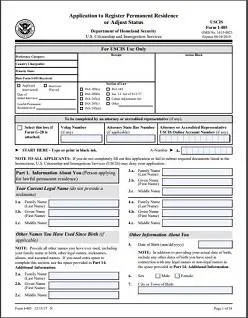Essential Guide to Family-based Immigration
Family-based immigration allows U.S. citizens and permanent residents to petition for certain family members to join them in the country. While it offers a way for families to reunite, the process can be complicated and take a long time. Here’s what you need to know:
Key Points: Family-Based Immigration
- Two main categories: Immediate relatives and family preference
- Immediate relatives have no annual visa limits
- Family preference categories subject to yearly caps
- Process begins with Form I-130 filing
- Eligibility factors include qualifying relationship and petitioner status
- Wait times vary significantly between categories
- Interview process is crucial for application verification
- Common challenges include inadmissibility issues and maintaining status
- Professional legal assistance can be helpful
Categories of Family-based Immigration
There are two main categories in family-based immigration: immediate relatives and family preference. Immediate relatives include spouses, unmarried children under 21, and parents of U.S. citizens. These visas have no annual limits. Family preference categories cover adult children, siblings of U.S. citizens, and spouses and children of lawful permanent residents, subject to yearly caps.
Knowing which category you’re in is important, as it affects the application process and waiting times. Immediate relatives usually have shorter processing times than family preference categories. The family preference system has four subcategories, each with its own annual limit:
- F1: Unmarried sons and daughters of U.S. citizens
- F2A: Spouses and children of permanent residents
- F2B: Unmarried sons and daughters (21 years of age or older) of permanent residents
- F3: Married sons and daughters of U.S. citizens
- F4: Brothers and sisters of adult U.S. citizens
For more detailed information on family-based immigration categories, visit our family-based immigration page.
The Application Process
The process starts with filing Form I-130, Petition for Alien Relative, with U.S. Citizenship and Immigration Services (USCIS). This form shows the family relationship between the petitioner and the beneficiary. If the beneficiary is already in the U.S. and eligible, they may file Form I-485 for adjustment of status. Otherwise, they’ll go through consular processing using Form DS-260.
Be careful not to make mistakes on these forms, as errors can cause delays or denials. Common mistakes include incomplete applications, missing evidence, or incorrect filing fees. Always check your forms carefully and consider getting help if you’re not sure.
You’ll also need to submit documents to prove the family relationship and show that the petitioner can financially support the immigrant. These might include birth certificates, marriage certificates, financial records, and proof of U.S. citizenship or permanent residency.
Learn about the top 5 mistakes people make when filing for adjustment of status to avoid common problems.
Eligibility and Requirements
To be eligible for family-based immigration, the petitioner must be a U.S. citizen or lawful permanent resident. They must also show they can financially support the immigrant by filing an Affidavit of Support (Form I-864). This is to make sure the immigrant won’t need government assistance.
For those applying through marriage, it’s important to show that the marriage is real and not just for immigration benefits. This often means providing evidence of shared life, like joint bank accounts, lease agreements, or photos together.
Other eligibility requirements include:
- The beneficiary must be allowed to enter the United States
- The petitioner must meet minimum income requirements (usually 125% of the Federal Poverty Guidelines)
- Both parties must be legally free to marry if the petition is based on a marriage
- The relationship must continue throughout the immigration process
If you’re marrying a U.S. citizen, check out our guide on marrying a U.S. citizen and lawful permanent residency.
Wait Times and Visa Availability
Immediate relatives can usually move forward with their application as soon as the I-130 is approved. But family preference categories have to wait until a visa becomes available. This is determined by priority dates and the Visa Bulletin, which can be confusing.
Your priority date is usually the date USCIS receives your I-130 petition. You have to wait until this date becomes “current” in the Visa Bulletin for your category. This wait can be from a few months to several years, depending on your category and country of origin.
Here’s a general idea of current wait times for different categories:
Key Points: Family-Based Immigration
- Immediate relatives have no wait times
- Other family categories have wait times ranging from 1-14 years
- Key forms: I-130 ($675) and I-485 ($1440)
- Eligibility factors include qualifying relationship and petitioner status
- Priority date and visa availability are crucial factors
- Inadmissibility grounds include public charge, criminal history, and immigration violations
The Interview Process
Most family-based immigration cases involve an interview, either with USCIS for adjustment of status or at a U.S. embassy or consulate for consular processing. This interview is important because an officer checks the information in your application and makes sure your relationship is real.
Get ready by reviewing your application carefully. Be prepared to answer questions about your relationship, background, and plans. Remember, it’s important to be honest. If you don’t understand a question, it’s okay to ask for an explanation.
During the interview, you might be asked about:
- How you met your spouse (for marriage-based petitions)
- Details about your family members
- Your job history and future plans
- Your living arrangements
- Any past immigration violations or criminal history
For those looking ahead to citizenship, our guide on the N-400 application for naturalization provides valuable information.
Common Challenges and How to Overcome Them
Family-based immigration can be tricky, with potential problems like inadmissibility issues, maintaining legal status during the process, or age-out problems for children. Inadmissibility grounds can include criminal history, immigration violations, or concerns about needing government assistance.
To handle these challenges, stay informed about your case status, respond quickly to any requests for evidence, and think about getting legal help if you run into complications. The Child Status Protection Act (CSPA) can help in some cases where a child might become too old to be eligible.
Other common challenges include:
- Proving a marriage is real
- Dealing with past immigration violations
- Handling long processing times and backlogs
- Understanding complex documentation requirements
- Addressing health-related inadmissibility issues
Learn about the top 5 mistakes people make when filing for U.S. citizenship to ensure a smooth process.
The Importance of Professional Assistance
Because family-based immigration is complicated, many people find it helpful to work with an experienced immigration attorney. A lawyer can help you understand your options, prepare a strong application, and handle any problems that come up during the process.
At STX Legal Group, we specialize in family-based immigration cases. Our team has over 15 years of experience and is dedicated to providing personal, cost-effective solutions for our clients. We understand the details of immigration law and can guide you through each step of the process.
An immigration attorney can help with:
- Figuring out the best immigration strategy for your situation
- Preparing and reviewing all necessary forms and documents
- Representing you in dealings with USCIS or consular officials
- Addressing any complications or requests for evidence
- Keeping you informed about changes in immigration law that may affect your case
Learn more about how we can assist with your family-based immigration case.
Conclusion
Family-based immigration offers a way for families to reunite in the United States, but it requires patience, attention to detail, and often, professional guidance. By understanding the process, preparing thoroughly, and staying informed, you can navigate this complex system more effectively. Remember, each case is unique, and what works for one family might not apply to another. If you’re considering family-based immigration, don’t hesitate to seek expert advice to ensure the best possible outcome for you and your loved ones.




